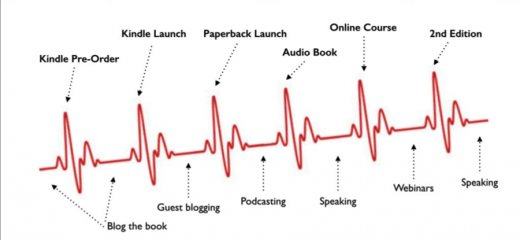Content monetization in 2015 involves learning new ways to distribute and market content so that you can reach incremental buyers and leads on platforms that offer a large number of engaged users. Those users are there for one reason: to buy premium digital content. The days when keyword-optimized landing pages with downloadable PDFs powered by PayPal and video testimonials performed best are long over.
Established brands or long-standing websites with decent traffic can still convert hard-won site visitors into paying customers using the tactics and technologies of the past. But you can do even better by exploiting some of the overlooked content monetization engines that bring a lot of value to your audience development efforts. Some of the benefits include a built-in user base, high placements in Google, ease of use and ability to edit and no cost.
The New Rules of Content Monetization
Using content monetization engines to build and distribute your digital content products is important because both Google and consumers have evolved.
Marketing is not democratized. Distribution is accessible. The gatekeeper is out, opportunities for all are in. Are you tapping into Amazon? (If not, here’s an article on our site about how to start.) Are you building courses on Udemy? These high-growth platforms, such as Amazon Kindle, Audible or Udemy, are also ranked well in Google and have their own distribution channels.
The Network Effect
Above all, their algorithms are built in a way that rewards network effects. The more people read it, the more power it has. Every additional user brings a lot of value to your business because your authority rank on these platforms increases.
For example, the Amazon algorithm gives your content more “love” as more users sign up for it. Through Amazon Kindle Direct Publishing (KDP) Select, you can offer your Kindle book for free for a limited time. Every quality Amazon download brings value to your book, boosting your author rank, which enables you to be more visible in Amazon search, relevant categories and on product pages (“users who bought this book also bought your book!”). It’s a win-win. If you get enough users to download your book and drop reviews, Amazon will do the job for you. You can’t match that with a downloadable PDF on your site.
The Power of Compounding
Keep your content creation momentum rolling. Turn your content product into a brand. Author James Altucher has done just that with his Choose Yourself self-published book series. The great secret is no secret, really; you’ll amplify opportunities by offering free, valued-packed forms of content like e-books, online courses, slides and blog posts because savvy web visitors demand value. Create value and become valuable.

Although distribution platforms may change, the principles remain the same: create helpful, problem-solving content for a targeted audience and distribute through multiple channels.
The New Rules of Book Monetization
Amazon’s platforms are the ultimate doorway to monetizing your content. Amazon is the fifth-biggest website on the web in the U.S. in terms of traffic, and it offers a full suite of self-publishing tools for marketing and distribution. The one-stop-shopping digital storefront is a search engine that sees a tremendous amount of daily volume.
Amazon users know exactly what they want. If your product is a match and shows up on targeted keywords, expect to see your product downloads and revenue steadily rise. Tag your book properly to attract interested traffic. I used MerchantWords tool to come up with a creative keyword strategies to optimize my book, SEO Like I’m 5. This tool mines real Amazon search data.
Categorize and classify your info products to yield the best results. Branching into similar niches leverages your presence swiftly. When I launched my first book on Amazon, my goal was to establish best seller status in both Internet searches and SEO niches. Upload your eBook to KDP to kick off your content monetization efforts. You can generate revenue of 35 to 70 percent per sales depending on the pricing model you choose and the content you provide.
After releasing your Kindle, step it up and appeal to a wider audience by releasing your paperback book on CreateSpace. Pricing depends on factors such as size, color, cover and depth of the book. Order copies in volume to receive a bigger discount and to generate a buzz by giving out these books for free, or sell them using Square. Then, you can organize workshops.
I recommend Audible for your audio book marketplace. Leverage your presence through the networking effect on this site. Users can pick from a wide range of audio books and tap into a 30-day free trial. You can also earn royalties through the integration of Audible with Amazon.
The New Rules of Online Course Monetization
Finally, you can also launch an online course through Udemy. Building an online course establishes your authority and opens another monetization stream for your online brand. I found it useful to market my Udemy course with a enticing and memorable domain redirect, IWillTeachYouSEO.com. You can also use subscription-based platforms such as Skillshare or Skillfeed to repost your online classes.
Content drives business. So package your knowledge into info products to benefit your audience, and establish a steady revenue stream through smart monetization strategies.
A version of this post originally appeared on The Next Web.













